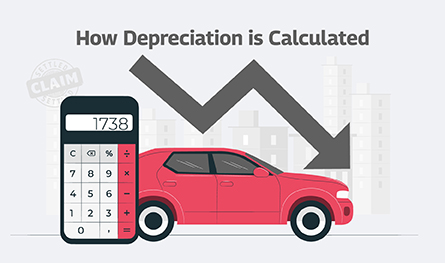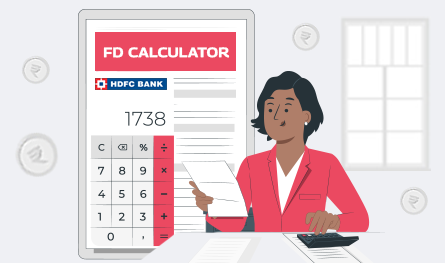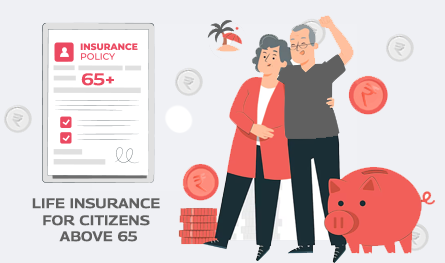Related Articles
 Jan 08, 2025
Jan 08, 2025
Is Varicose Vein surgery covered under the health insurance policy in India
 Health Insurance
Health Insurance
Designed by the government of India, the National Health Insurance Schemes cater to the enrichment of the healthcare facilities offered to the Indian citizens. Let us learn about them in detail in this post.
National Health Portal is a government of India initiative that serves as a single point of access to receive legitimate health information for every Indian citizen. The portal has been set up by the Indian Government with the support of the Health and Family Welfare Ministry as well as the National Knowledge Commission. The portal offers information on multiple plans of national insurance schemes in India to serve specific needs of different people.
In this post, we will discuss some national insurance schemes and their details.
Below are some important National Health Policy Schemes offered by the Indian government:
| Plan Name | Key Highlights |
Rashtriya Swasthiya Bima Yojana (RSBY) |
– Portable – Safe and secure – Cashless and paperless transaction – Included public hospitals – Better coverage |
Employees’ State Insurance Scheme (ESIS) |
– Plan applies to small non-seasonal business employing over 10 people – Scheme also covers private medical institutes in some states/UTs |
Central Government Health Scheme (CGHS) |
– Allow domiciliary care within the dispensary services – Offer specialist consultancy services – Include laboratory examinations – Hospitalization – Beneficiary higher education |
Aam Aadmi Bima Yojana (AABY) |
– Compensation of INR 30,000 is offered to nominee in case of natural death – Add-on advantage of children scholarship is available under the scheme |
Janashree Bima Yojana (JBY) |
– Janashree Bima Yojana has been merged with Aam Aadmi Bima Yojana and has been made one scheme |
Universal Health Insurance Scheme (UHIS) |
– Cover families living below poverty line – Cover medical cost of every family member – Insurance cover is offered for nominees of people dying in accidents – Covered by four public sector general insurance companies – Offer medical expenses up to INR 30,000 in case of hospitalization |
Ayushman Bharat Yojana |
– Scheme offers a health cover of Rs 5 lakh – covers medicines, diagnostic expenses, medical treatment, and pre-hospitalization costs – Poor families of India can benefit from this healthcare scheme |
RSBY, an initiative of the Ministry of Labour and Employment, Government of India, was introduced to offer health insurance facilities to families living Below Poverty Line (BPL). The scheme was introduced with the objective of protecting the BPL families from monetary liability arising because of health emergencies that require hospitalization.
Under the RSBY scheme, nominees are entitled to receive a coverage of up to INR 30,000 in case the individual is hospitalized due to ailments and other reasons like accidents. In many hospitals, the government has set treatment package costs for numerous interventions.
The RSBY national health policy has no age limit and it covers pre-existing health conditions from day one. The coverage is extended to 5 family members including the head earning member of the family, his/her spouse, and three dependents. The plan is available with a registration fee of INR 30, while the government pays the premium on behalf of the insured to the insurer.
ESIS plan is designed to offer social and economic security to workers (industrial workers) and their dependents in India. This plan is regarded as a social security system, which is customized to enable the industrial working class of hazardous occupations with different benefits including medical care for the insured individuals and their dependents.
Further, the plan allows many cash benefits during medical emergencies causing disability and loss of income options. Also, the program allows a monthly pension to the nominee of the insured in case of disability and death of the person due to industrial accidents.
Under the CGHS plan, the central government employees as well as pensioners are offered comprehensive healthcare facilities. The plan also extends to the dependents of the policyholders. The scheme was introduced in 1954 in New Delhi by the Central Government and is now operational in most of the States/UTs in India. The healthcare facilities under this scheme are provided via wellness centers and polyclinics under various medical systems such as Allopathic, Homeopathic, Unani, Ayurveda, Sidha etc.
The AABY is a program initiated to give social security to the landless households in rural India. The scheme was introduced on 2nd October, 2007 and it covers the earning head in the family. Under this scheme, a premium of INR 200 is equally shared by both central and state governments on a per person and per annum basis. The eligibility age of the insured should be between 18 to 59 years.
The JBY plan was introduced on August 10, 2000 to replace the Social Security Group Insurance Scheme (SSGIS) and Rural Group Life Insurance Scheme (RGLIS). The plan covers almost 45 different occupational groups within this scheme and offers life insurance to BPL families as well as families that are marginally above the poverty line. Individuals between the age group of 18 to 59 years coming under the 45 occupational groups are eligible under this plan for coverage.
You may also like to note that effective from January 1,2013 the Aam Admi Bima Yojana and Janashree Bima Yojana have been merged into one scheme and renamed as Aam Admi Bima Yojana.
The UHIS plan is offered by four major government run general insurers aiming at improving the healthcare access to poor families. Under the scheme, the insured individuals receive reimbursement of healthcare expenses for up to INR30,000 in case of hospitalization. The coverage, under this scheme, floats amongst all members of the family. If there is an accidental death, the family is offered INR25,000, while in case of loss of income due to disability, a compensation INR 50/- per day for a duration of 15 days is offered.
The scheme was redesigned to cater to the BPL families only. The subsidy of premium under the policy has been enhanced from:
INR 100 to INR 200 – individual
INR 300 – 5 member family
INR 400 – 7 member family
Ayushman Bharat is a flagship program of the Ministry of Health and Family Welfare, Government of India. This national health care scheme was introduced to realize the government’s vision of offering Universal Health Coverage (UHC) to every Indian. The plan allows a comprehensive and need-based healthcare facility with a health cover of INR 5 Lakh. It involves two main components, Pradhan Mantri Jan Arogya Yojana (PM-JAY) and Health and Wellness Centres (HWCs)
The scheme covers medicines, diagnostic expenses, medical treatment, and pre-hospitalization costs to help poor families.
There is not much difference between the public and private insurance schemes. In case of government healthcare, the treatment is done typically in a government hospital. In case of private health insurance, the treatment is provided in private hospitals. Below are some differences between public and private health insurance schemes in India.
Here are some points of difference between government and private health insurance schemes:
| Features | Government Plan | Regular plan |
| Eligibility | Available to lower-income people only | Available to everyone alike |
| Premium | Minimal premium or fully paid by the government(depending on the plan) | Premium is charged as per the plan selected |
| Network Hospitals | Offer a large number of public as well as private hospitals | A wide network of private hospitals |
| Sum Insured | Maximum sum insured can go up to INR 5 lakh | Maximum sum insured can be up to INR 1 Crore |
| Coverage | Allow narrow coverage | Allow greater coverage |
| Private Hospital Room | May or may not be available | Available (depends on plan) |
| Ambulance Charges | Available under a few plans | Available under most plans |
| Maternity Benefits | Available (Only for a single child under some cases) | Available (as per plan) |
| Policy Purchase | Policy purchase may take time | Policy can be purchased instantly |
| Tax Benefits | Not available | Available |
| Online Renewal | May or may not be renewed online | Can be renewed online |
| Monthly Premium Installment Facility | Not available | Available under some plans |
| Health Check-up | Not available | Covered under some plans |
| Domiciliary Hospitalization Cover | Not available | Available (depends on the plan) |
| Cumulative Bonus | Not available | Available on every claim-free year |
The national health policy is a government of India scheme that aims to provide everyone comprehensive and integrated healthcare to move the nation towards wellness. These schemes were launched for the welfare of people. They allow people to avail healthcare benefits at minimal cost.
The eligibility criterion of different government schemes differs as per different health plans. The policyholder must check the list of the documents required to make an informed decision about these schemes.
There may be certain restrictions in the Government Health Insurance Schemes, which varies from plan to plan. Thus, it is suggested to compare different schemes and read the policy documents properly for benefits offered and exclusions of the plans.
No, all health insurance schemes are not introduced by the Central Government. There are many dedicated medical insurance schemes offered by the State Governments of particular states.
Most government healthcare schemes may not be purchased online. However, the facility of money getting deducted directly from the bank is offered by some banks.
Different health insurance schemes provide different sum insured or coverage. However, the policy coverage offered by government health schemes is lower as compared to private insurance policies.
Yes, these two policies initiated by the Narendra Modi Government are the same. It provides a cover of INR 5 Lakh at a premium of INR 30 only.
Yes, Aadhaar Card along with other specific documents are required to buy a state/national health scheme.


Paybima Team
Paybima is an Indian insurance aggregator on a mission to make insurance simple for people. Paybima is the Digital arm of the already established and trusted Mahindra Insurance Brokers Ltd., a reputed name in the insurance broking industry with 17 years of experience. Paybima promises you the easy-to-access online platform to buy insurance policies, and also extend their unrelented assistance with all your policy related queries and services.
So, you’ve crossed the fabulous 60 mark. Retirement may be on the cards, your kids might be off doing their own thing, and suddenly your knees are making more noise than your WhatsApp notifications. Welcome to the senior citizen club.
Now let’s talk about something most of us tend to postpone until a doctor gives us a reality check: health insurance. If you are wondering whether buying health insurance after 60 makes sense, the answer is a loud and clear yes. This article will cover everything you need to know about it, how it makes sense, how it differs from health insurance for young adults, and what you need to look out for when checking for medical insurance above the age of 60.

.png)
April 2 is observed as World Autism Awareness Day and there is no better way to observe the day than to raise awareness of this condition and to promote kindness towards autistic people. Read on to know more.


Car depreciation implies the difference between the cost of a car at the time of buying the car and when you sell it. A car insurance claim amount is determined by the car depreciation rate. The car depreciation rate is the reduction in the value of your car over its lifespan caused by wear and tear.


Fixed Deposits (FDs) are one of the safest ways to grow your savings. HDFC Bank offers attractive FD interest rates, allowing you to earn guaranteed returns on your investment. But before you invest, it's important to know how much interest you will earn and what your final maturity amount will be.


If you think of life insurance, chances are you are picturing something people buy in their 30s or 40s. But what if you are 65 or older and just getting started? The good news is that you are never too late. Whether you are thinking of easing the financial burden on your family, covering final expenses, or simply leaving behind a legacy, there are life insurance options tailored just for you.
This article will be a guide to life insurance for senior citizens above 65 years, explaining why it is important, the type of insurance options, and how to get the right policy for you.
